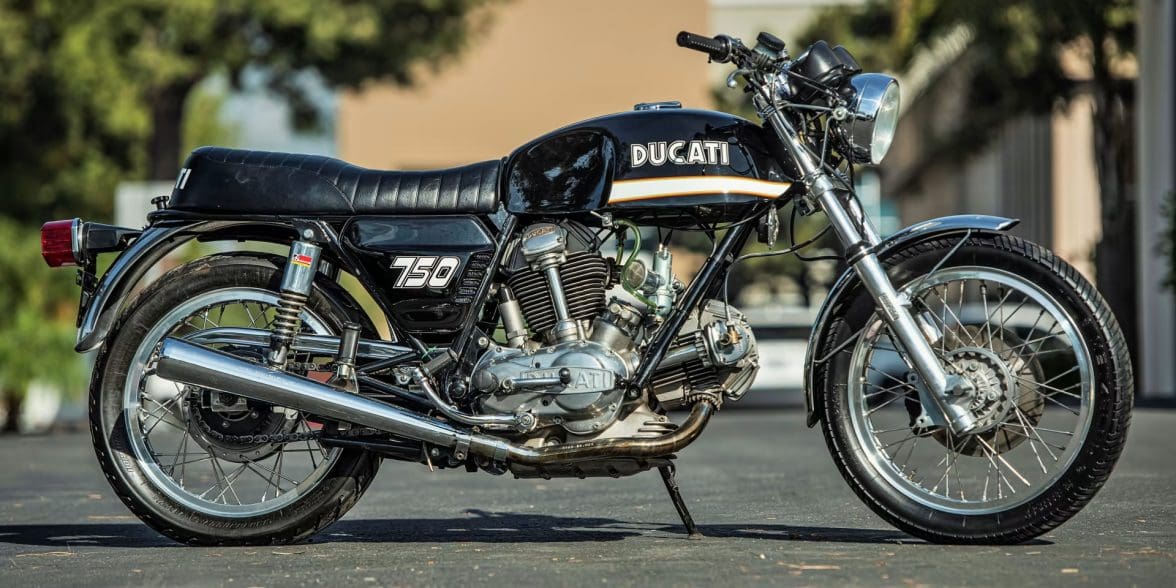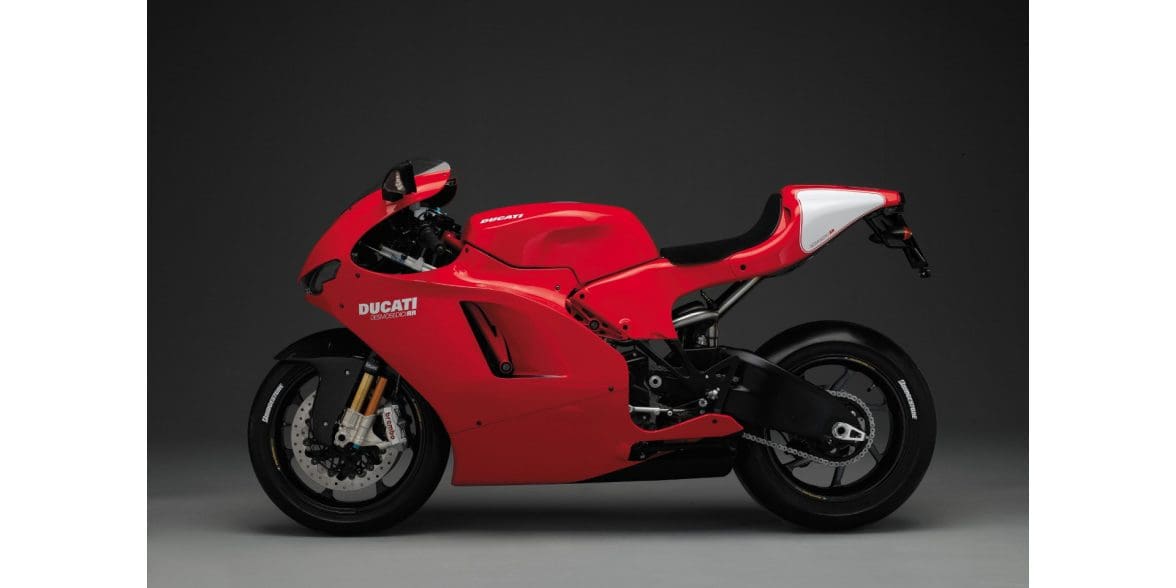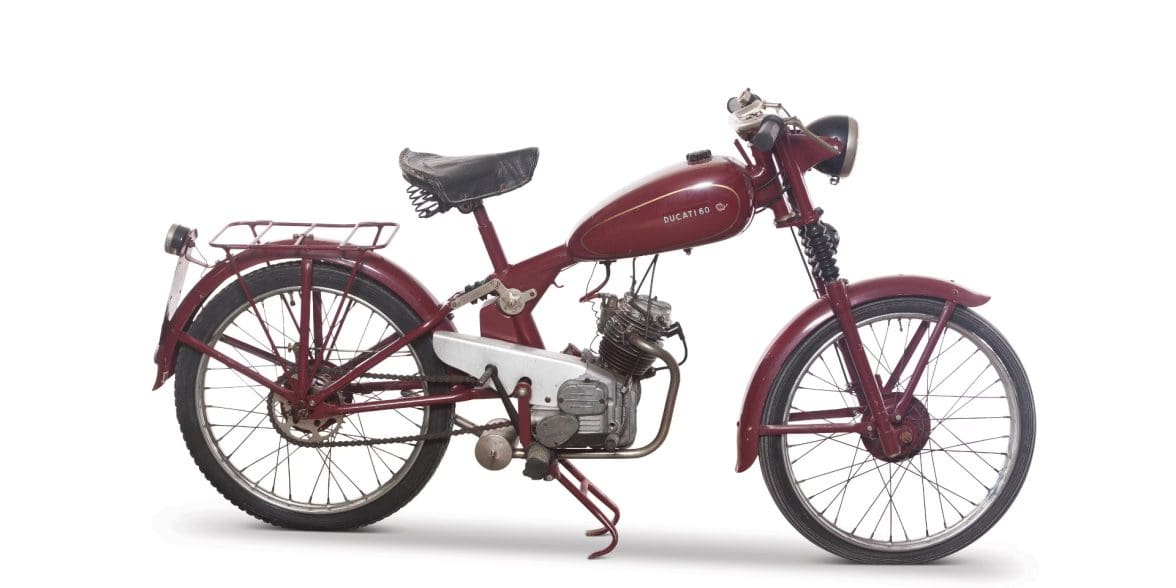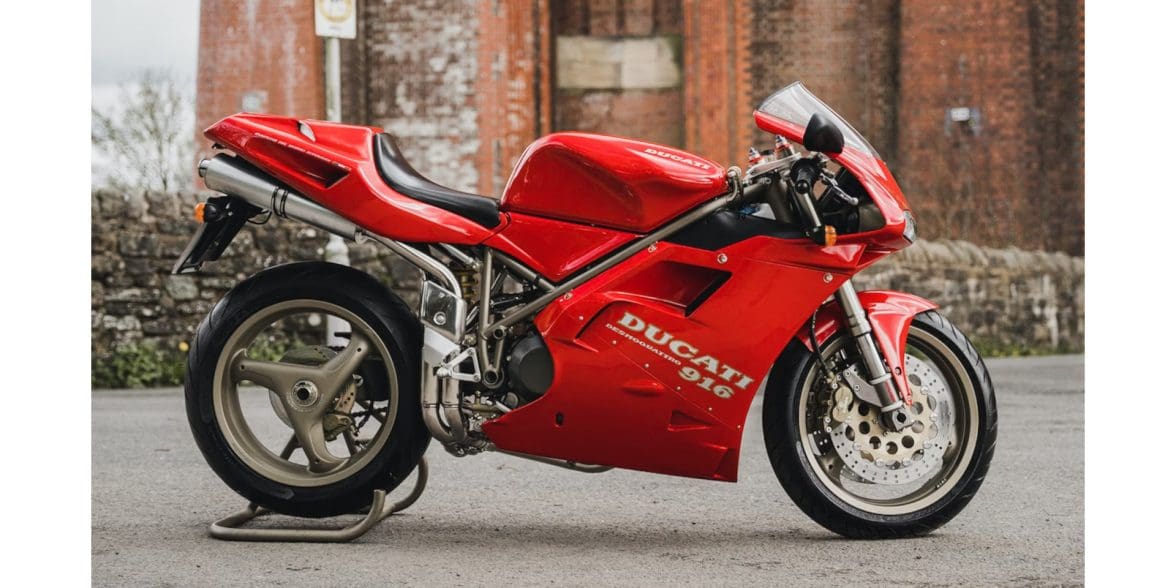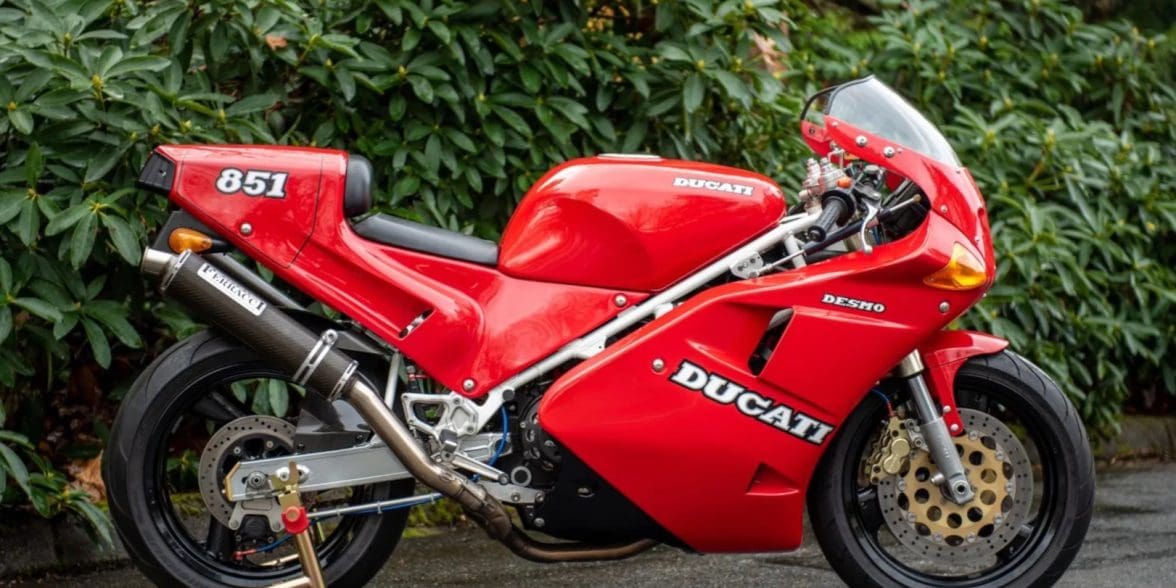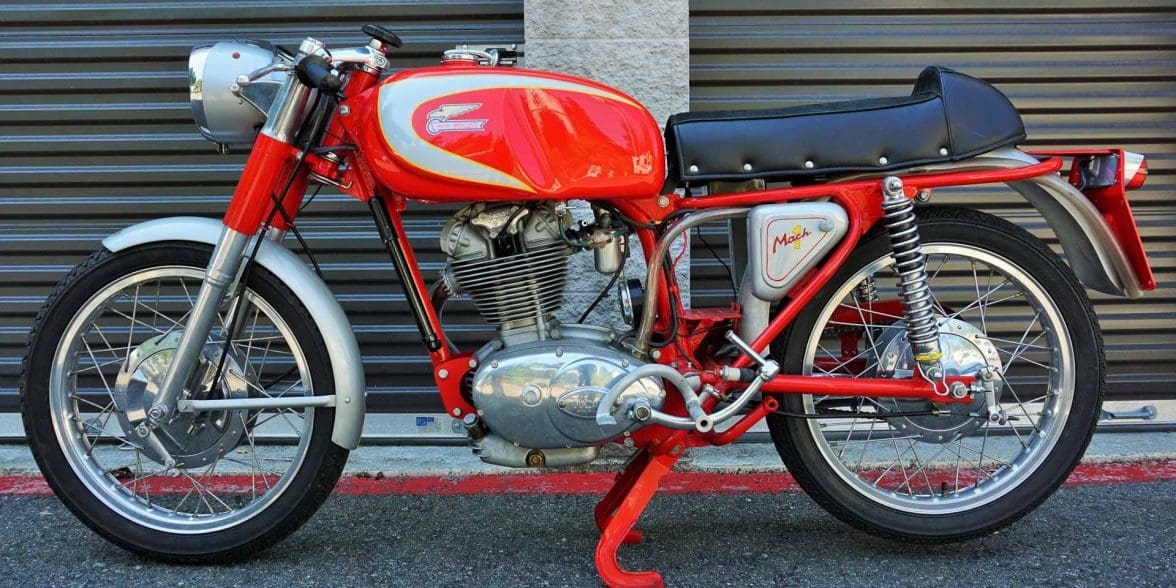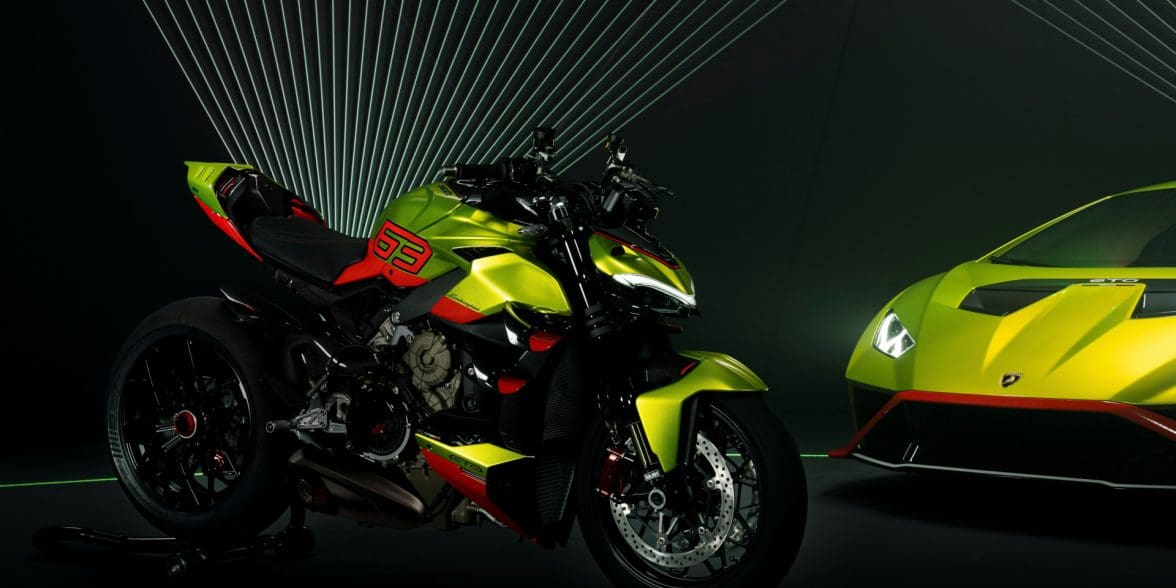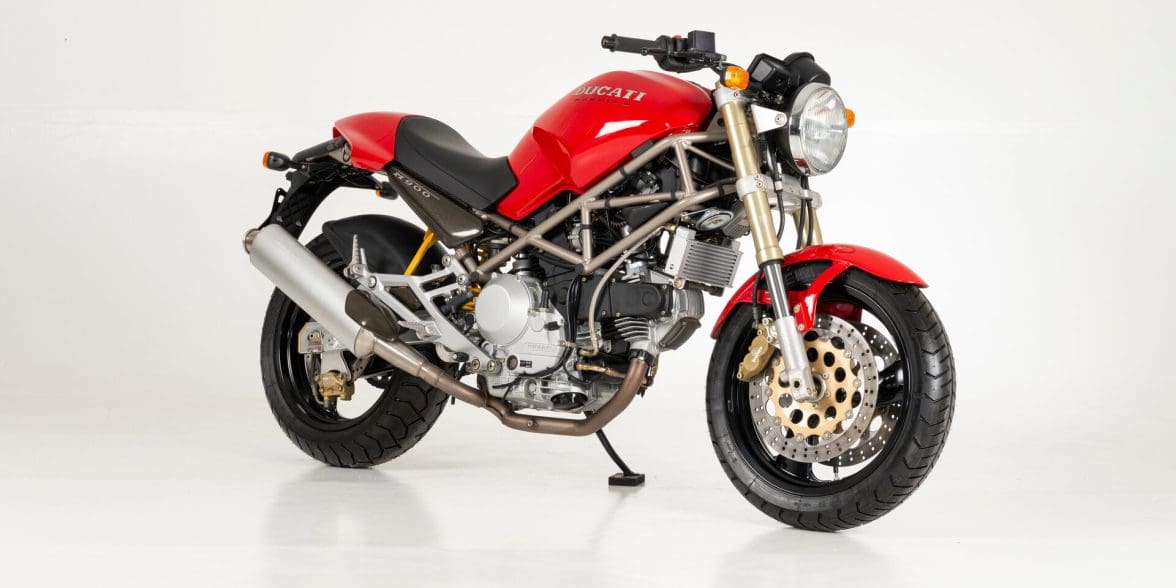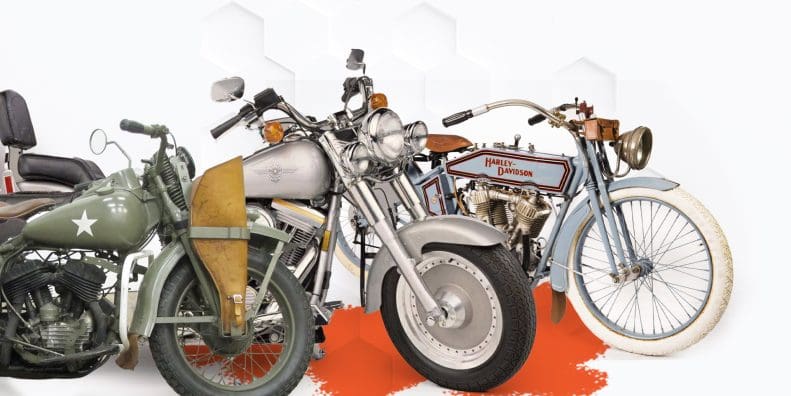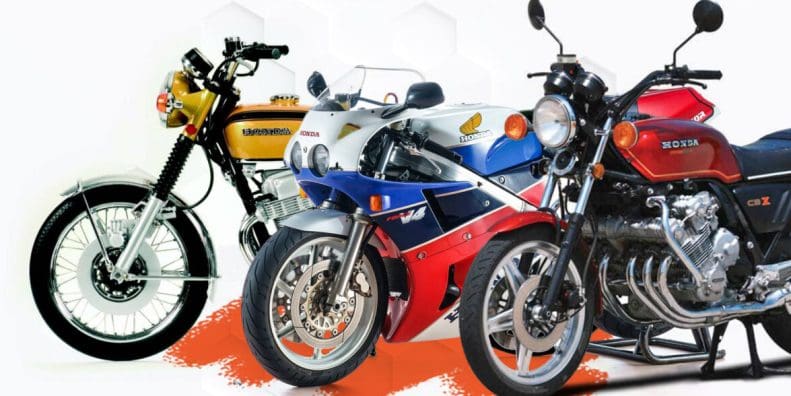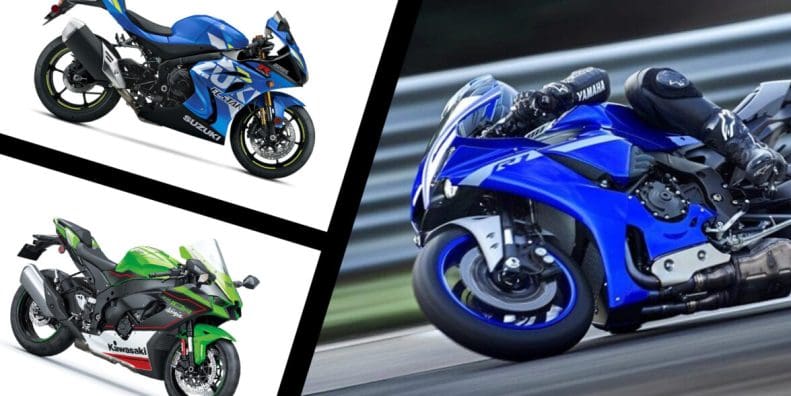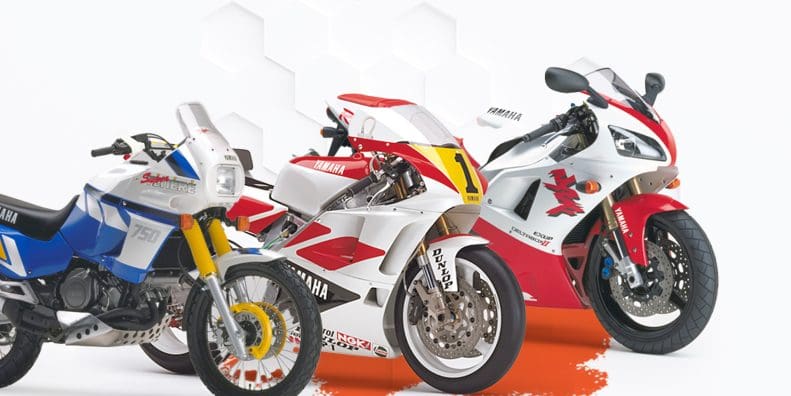The Best Ducati Motorcycles Ever Made [2024 Edition]
Updated September 8, 2023 by Simon Bertram
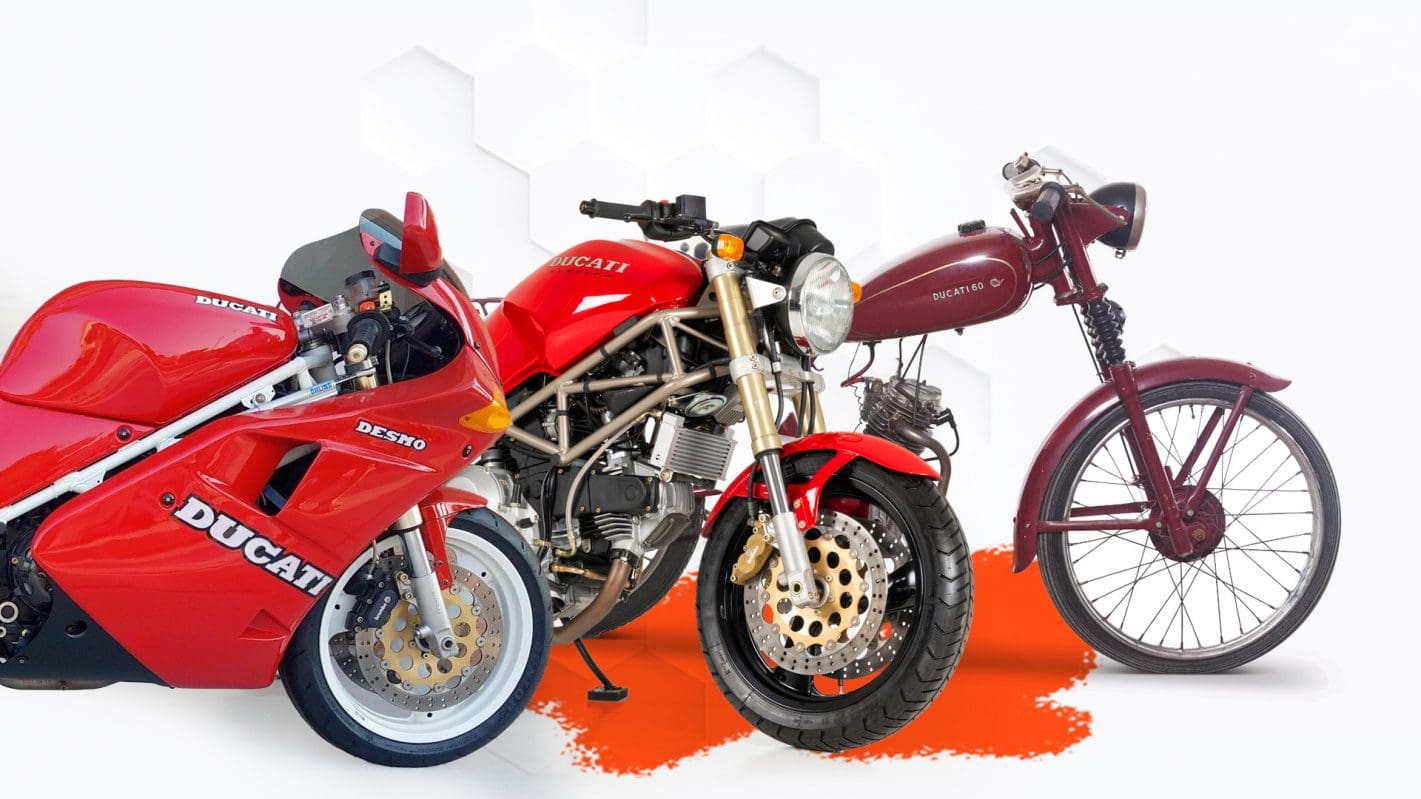
Italian Style & Power Through The Famous Desmodromic Valves
Article Quick Nav
These are our picks for the best Ducati's ever made:
Ducati, as a company, is only 3 years away from its centenary. Founded in 1926 by Antonio Cavalieri Ducati and his sons Adriano, Marcello, and Bruno, for the first 23 years of its life it was a manufacturer and distributor of radio components. During World War 2, it provided the fascist regime of Mussolini with military radios and electronics, and became a prime target for the Allies, with the main factory in the Borgo Panigale district of Bologna, Italy being bombed several times. It was completely destroyed on October 12, 1944 by a flight of B-24 Liberators, yet as the company still had its old factory and headquarters elsewhere in Bologna, they survived the war.
During Italy's difficult post-war years, Ducati started to attach small engines to bicycles, eventually making their own bicycle to suit the engine, creating the Ducati 60, their first motorcycle. From there, they went typically Italian about it and started to produce beautiful looking, powerful, and evocative motorcycles that have stirred the passions of generations of Ducatista for almost 75 years.
During those decades, some simply incredible motorcycles, be it for their style, their significance in motorcycle history, or because they created entirely new classes of bikes, have been released upon the world. With this list, we celebrated what we believe are the 8 best Ducati motorcycles ever made, and we're fairly certain you'll agree with our choices.
About Our Selections
The only criteria for this list was that the motorcycle be primarily designed, produced, assembled, or manufactured by Ducati. No other criteria matter.
1971 Ducati 750GT
The first Ducati with the now signature L-twin layout
Why We Picked It:
By the time the 1970s had rolled around, Ducati was well into their stride in producing small displacement sport and racing bikes. Then came the Japanese with models like Kawasaki's Z1 and Honda's CB650 changing what a sport motorcycle meant: Big engine, big power, big fun.
After a rather rapid development cycle lasting just over 16 months under the now legendary Dr. Fabio Taglioni, the Ducati 750GT was ready. It would overshadow its Japanese competitors by having a huge 748cc V-twin, but canted over on its side so that one cylinder fired horizontally and one fired vertically. Because the American's were associated with the V-twin name, Ducati decided to call their layout an L-twin, making it the first of their bikes to bear that designation.
It was a pretty powerful bike too, with 60 HP @ 8,000 RPM, a max speed of 124 MPH, and that weighed just a hair over 440 lbs wet. Keep in mind, in the 1970s, some racing bikes didn't have that much power. Understandably, it sold extremely well, and was also the basis for the 750 Imola Desmo race bike, which placed first and second in the 1972 200 Miles of Imola.
Specifications:
Price: $1,995 in 1971 ($15,060 in 2023)
Engine: 748cc L-twin
Power: 60 HP
Torque: ~45 lbs-ft
Transmission: 5 Speed Manual
Curb Weight: 440 lbs
Strengths:
The first Ducati to have an L-twin engine
Was created to compete against the sudden influx of powerful UJM sport bikes from Japan that had started to flood the global market
Learn More:
2006 Ducati Desmosedici RR
About as close as a Ducati enthusiast could get to owning a MotoGP racing bike, but for the road
Why We Picked It:
If there is one thing that Ducati is famous for in racing, it's that their bikes have immense power to catapult them out of corners and down the next straight at speed. For the 2006 FIM MotoGP season, the Italians presented their GP06 Desmosedici model, which caused quite the hype train to form as it absolutely blitzed Winter testing with some of the best cornering and handling yet for the 21st century.
In fact, the GP06 created so much fanfare that Ducati decided to make a "homologation special" for their customers, the 2006 Desmosedici RR. While it wasn't exactly the same as the MotoGP bike, it shared the same ultralight swingarm, magnesium wheels, carbon fiber fairings in Ducati racing livery, Brembo brakes, and was in fact more powerful than the racing bike!
That power came from a 1,198cc 90-degree V4 that thundered out 198 HP to the rear wheel, back when 150 HP was considered too powerful for a superbike on the road! It also is one of the few bikes that came from the factory with the shifter set up like a GP bike, flicking up for first, then down to go up the gears.
It was not cheap at $72,000 MSRP, and only 1,500 were ever made, but that price included priority servicing at any Ducati authorized dealership with all fees covered, a special locking bike cover, and a racing kit that included an unbaffled, track-only exhaust system. Not bad if you had the money and were a rabid Ducatista!
Specifications:
Price: $72,000 in 2006 ($109,170 in 2023)
Engine: 1,198cc V4
Power: 198 HP
Torque: 72.4 lbs-ft
Transmission: 6 Speed Manual
Curb Weight: 425 lbs
Strengths:
One of the most highly collectible 21st century Ducati superbikes
At least 70% of the parts on the bike were the same used on the MotoGP GP06 bike
While it was sold as a 2006 model, production did not start until 2007, and the first deliveries started to arrive in January 2008 to eager customers
Priority for ordering was given to those who had bought the previous special edition, the 999R
Learn More:
1950 Ducati 60
Everyone has to start somewhere: Ducati's first ever motorcycle
Why We Picked It:
While Ducati as a motorcycle company was started in 1949, Ducati as a company started much earlier in 1926 as a manufacturer of vacuum tubes, transistors, and parts for radios. It provided military radios for the Italian regime in World War 2, and despite their main factory in the Borgo Panigale district of Bologna, Italy, being bombed to hell by the Allies, they managed to rebuild and continue business.
After the war, Ducati began selling Cucciolo engines from SIATA, little combustion engines that were attached to bicycles to make them motorized. By the time 1949 rolled around, they had sold over 200,000 of the engines, and had started to produce their own Cucciolo single cylinder engines. They decided then that if they have the engine, why not make a bicycle that was perfectly suited to it?
While in essence a Caproni-style bicycle fitted with a Cucciolo engine, the engine and frame were made in and assembled at Ducati's factory, making it their first official motorized bicycle. It was the start of a great legacy, but at the time, even five years after the war ended, Italy was still in shambles, and cheap, effective, and easy to use transportation was vital to the rebuilding effort.
Basically, the Ducati 60 could be bought for pennies, ridden all over the country, be used by couriers and businessmen alike, and was one of the many bits of glue that slowly patched Italy up.
Specifications:
Price: $4.71 (143 Italian Lira) in 1950 ($60 in 2023)
Engine: 59.5cc two-stroke single
Power: 2 HP
Torque: Unknown
Transmission: 3 Speed Manual Foot Shift
Curb Weight: 98 lbs
Strengths:
The first ever motorized bicycle manufactured by and assembled by Ducati
Was so light and fuel efficient that it was also the first Ducati to include women at a target market. You need to remember, this was the 1950s, and it was all-hands-on-deck to rebuilt Italy, even in a time when women were still thought of as homemakers and housewives.
Probably the least expensive Ducati motorcycle by MSRP. In 2023, they go at auction for between $8,000 to $20,000 depending on condition, with a museum grade unit fetching the higher values
Learn More:
1950 Ducati 60 at Ducati Heritage
1994 Ducati 916
A very special Ducati superbike carrying the powerful engine from Grand Prix racing
Why We Picked It:
For any true Ducatista, they don't even need to read this part to understand why the 916 is here. For everyone else, read on!
The Ducati 916 was not quite a homologation special of the Ducati 888 race bike, despite having the same body shape and even the same frame. What it is most famous for, however, is that it was the first street legal Ducati superbike with the Desmoquattro L-twin racing engine.
To explain the significance and why it is one of the greatest Ducati's ever, for almost its entire history, the Italians had been making engines for their streetbikes with two valves per cylinder. They had started to produce four-valve-per-cylinder sport bikes in the mid-1980s, but they were much safer versions, not the raw beast that beat at the heart of race bikes,
The Desmoquattro was designed to go racing, starting in the 1986 season, and was thought too complex and unreliable to put into a street-going sport bike. However, as the years passed, the engine proved to be extremely reliable, and kept getting bumped up in displacement until it reached 916cc in 1993, and Ducati decided to give it a go in a street bike.
The other reason that the 916 is one of the most desirable Ducati's ever is that it was the first special edition that was made under the guidance of Massimo Tamburini, one of the greatest motorcycle designers of the 1980s and 1990s. Every line and curve, every nut and bolt, even the way the fuel tank was shaped had purpose. Even the single-sided swingarm, of which this was the first Ducati to have one, was designed to make wheel changes in endurance races easier and faster.
It was the perfect combination, and was so well received that Ayrton Senna, friend of Claudio Castiglioni, was enchanted by it. Just before his untimely death at Imola in 1994, Senna signed off on allowing a special special edition, the 916 Senna, to be made. These days, if you can find one in mint condition, expect to pay over $100,000 at auction or in a private sale.
Specifications:
Price: $14,500 in 1994 ($29,900 in 2023)
Engine: 916cc L-twin
Power: 114 HP
Torque: 67 lbs-ft
Transmission: 6 Speed Manual
Curb Weight: 429 lbs
Strengths:
The first road bike from Ducati that had a single sided swingarm, as it was developed for the racing program to make switching out wheels easier
The first road going superbike that had the desmoquattro engine technology, previously only used on racing bikes
While the 916 is a highly collectible superbike that many might be able to afford, the 916 Senna, in any of its three release series, will still fetch nearly $100,000 at auction today
Was the bike that inspired the entire Panigale model line of supersports and superbikes
Learn More:
1987 Ducati 851 Strada
Ducati's first proper road-going superbike
Why We Picked It:
The term Super Sport, by the 1980s shortened to supersport, had been applied to almost any sportbike out there by the time the mid-1980s arrived. It was so popular a term that it was understood to denote an entire sub-class of sport bikes, and many thought that it was the best type of sport bike you could buy.
Then, in 1985, Suzuki released the GSX-R750. What shocked the world about the first Gixxer was that it produced an at the time unbelievable 100 HP. It is important to mention the GSX-R series, as the words "super bike" began to get used in magazines and TV programs.
Ducati, having just been bought out by Cagiva, was given the mission of producing the world's best supersports, and to get the brand winning races again. Thus, the Ducati 851 began development.
Originally a race bike, it was the first Ducati to have a fully liquid cooled engine, the first with four valves per cylinder, and the first to have the very expensive and rare technology of fuel injection used on its L-twin heart. Ducati collaborated with the famous Cosworth Engineering out of the UK to develop the cylinder heads, and had the four valves sit a 40 degrees, the maximum a desmodromic valve could be brought in to.
The result was a race bike that produced 93 HP, and had moderate success at the track, with a pole position at the 1986 Misano Grand Prix, and a pole position in 1987 in the World SBK season. By the time the road going 851 Strada was ready, it had been developed further to produce 105 HP, 5 more than the Gixxer, and it garnered a ton of attention. It was so popular that it was produced for four years, from 1987 to 1991, while the racing model was reworked to have the first Desmoquattro race engine fitted in 1988.
Looking back at it now, the common saying is that while Suzuki may have invented the superbike, Ducati perfected it, and has been making superbikes ever since.
Specifications:
Price: $12,000 in 1991 ($26,930 in 2023)
Engine: 851cc L-twin
Power: 105 HP
Torque: ~53 lbs-ft
Transmission: 6 Speed Manual
Curb Weight: 460 lbs
Strengths:
A project that started out as a race bike that eventually made it to the streets, it was a direct response to Suzuki's 1985 GSX-R750
The first Ducati to have a fully liquid cooled, fuel injected, four valves per cylinder L-twin engine. These advancements, when applied to the street bike after a couple of seasons of racing, gave it 5 more HP than the Gixxer
While Suzuki had invented the superbike, Ducati took the formula and perfected it: A race bike for the road with over 750cc and over 100 HP.
That formula is still in place today for all superbikes, although the yard stick has moved. Today, a Ducati superbike is a racing-capable or racing-derived supersport with over 900cc, over 140 HP, and can approach 200 MPH +/- 20 MPH
Learn More:
1964 Ducati Mach 1
The first Ducati to be able to go faster than 100 MPH
Why We Picked It:
While we think of 500cc engines in 2023 as entry level or beginner friendly, they were exceedingly rare in the 1960s. Only a few very expensive motorcycles from BMW or the big V-twins from America had that displacement or higher, and the far more common displacement was 250cc.
In 1964, Ducati brought out what could arguably be called their first supersport, although the 750SS from 1974 more correctly deserves that title. What made the Mach 1 so important was that from its 250cc motor, it was able to produce an at the time astounding 28 HP.
It did this using a two valve, four stroke single cylinder engine with desmodromic valves, which allowed it to be revved much higher than most other engines of the time. This was important, as peak power came on at 8,500 RPM, which was when engines in other bikes would be starting to gasp and wheeze or be beyond their redlines.
The Mach 1 had a decently aerodynamic shape for a sport bike of the time, but it was when an owner got the bike out on a motorway, opened the right wrist, and clicked up through the al-new 5 speed wet plate clutch transmission that they found the speedometer needle creeping into triple digits.
Flat out, with the rider tucked down over the tank and their knees squeezing into the tank for all they were worth, the Mach 1 could hit 106 MPH. It was the first Ducati production motorcycle to do so, and that earns it a spot as one of the greatest Ducati's ever made.
Specifications:
Price: $9,104
Engine: 248.6cc four-stroke single
Power: 28 HP
Torque: Unknown
Transmission: 5 Speed Manual
Curb Weight: 255 lbs
Strengths:
The first Ducati sport bike able to breach 100 MPH, a significant barrier in the 1960s
Became one of the few Italian motorcycles that attracted the cafe racer crowd in the UK and beyond, as it was one of the few bikes you could achieve "a ton" (100 MPH) on straight from the factory
Was used extensively by Tourist Trophy racers, either converted into race bikes with aerodynamic fairings, or used as-is in strict production-class TT races, including the Isle of Man.
In 1969, on a production Mach 1, Mike Rogers averaged 84.3 MPH around the Isle of Man TT mountain course. In 1969, that was the speed people expected from the dedicated race bikes, so it stunned many that he had achieved it on a little Italian sport bike
Learn More:
2023 Ducati Streetfighter V4 Lamborghini
One of the greatest collaborations of all time between a supercar maker and a superbike maker
Why We Picked It:
For the longest time, Ducati's have been referred to as "The Ferrari of Motorcycles." Well, it appears that that moniker was wrong, as they are most definitely the Lamborghini of Motorcycles now... quite literally.
The collaboration between the two companies formed as a celebration of Lamborghini's STO, a barely road legal track-oriented version of the already bonkers Huracan. What makes the Streetfighter V4 Lamborghini different than the other Streetfighter V4 models is that almost every part, fairing, paint spec, and wheel has had a visit to Lamborghini Corse, their racing department, and tweaked if not outright redesigned.
The wheels are bespoke to only this model, and are superlight magnesium. The winglets and air intakes on either side of the bike have been reshaped to resemble the STO's rear wing and air intakes. A bespoke, fully titanium exhaust from Akrapovic, who also provide the exhaust for the STO, makes sure the bike is heard. The pillion seat cover has strakes added, to resemble the strakes over the front wheels of the STO to reduce wheel well pressure.
There are 630 units allotted of the standard V4 Lamborghini, all of which come in Lamborghini's signature Citrea green, with Dac orange highlights and the number 63 emblazoned on the tank to celebrated the year of Lamborghini's founding. A further 63 units have been reserved for anyone that buys an STO and wants to have the Streetfighter V4 Lamborghini match their paint choice, driver number, and the like.
Being a special edition, and also being worked on by Lamborghini Corse, the Streetfighter V4 Lamborghini is understandly shockingly expensive, at $68,000.
Specifications:
Price: $68,000
Engine: 1,103cc V4
Power: 208 HP
Torque: 90.4 lbs-ft
Transmission: 6 Speed Manual
Curb Weight: 397 lbs
Strengths:
Limited to 630 + 63 unit set aside for Lamborghini customers that buy a Huracan STO and want to add the Streetfighter V4 to their order, where it will be painted the same color as their STO and carry the same number that they select
The "standard" 630 units will be colored in Citrea Green for the main color, with highlights in Dac Orange, as designed by Centro Stile Lamborghini in conjunction with Centro Stile Ducati
Learn More:
1993 Ducati Monster 900
The bike that not only found a niche, but helped create an entirely new class of motorcycle
Why We Picked It:
If you look back through pictures of motorcycles up until around 1990, one thing is evident about almost all of them: They have some type of fairing. The only ones that didn't were known a "Standard" motorcycles, and were almost always a Universal Japanese Motorcycle (UJM). Even then, they were not referred to as anything other than "sport standard."
Then, as a styling exercise in 1992, Ducati took one of the bikes they were developing, ripped off all its fairings to the point that the entire frame was exposed and only the fuel tank and pillion seat had any kind of body panel, and asked what people thought about it. The name of that styling exercise? "Il Monstro," or The Monster.
People all over the sport bike world loved it, so in 1993, the Ducati Monster 900 was let out of its cage. It came with a 904cc L-twin desmodromic engine, punching out 73 HP and 56 lbs-ft of torque. Because it was completely stripped of its fairings, it was referred to as a "naked" motorcycle.
As it had no weight up high, and the bike weighed a scant 408 lbs wet, it was immensely agile and became an instant hit with the canyon carving crowd. They love their new Monster so much that the term "sport naked" started to be used, as it was literally an undressed supersport.
The term caught on, and within a year of the Ducati's release, the new class of sport naked and hyper naked bikes was established, with the Monster 900 as the founder of the class. It also inspired some riders to tear the fairings off their own bikes, and can be considered as significantly aiding in creating the streetfighter class of bikes as well.
The Monster has stood the test of time, as this year it is celebrating it's 30th anniversary as a Ducati model with an ultra-light limited edition, the Monster 30th Anniversario.
Specifications:
Price: $8,950 in 1993 ($18,950 in 2023)
Engine: 904cc L-twin
Power: 73 HP
Torque: 56 lbs-ft
Transmission: 6 Speed Manual
Curb Weight: 408 lbs
Strengths:
Was originally a styling exercise that garnered so much attention that Ducati made a production model
When it released, despite naked motorcycles existing as Standard-class bikes for decades, it started the entire Sport Naked/Hyper Naked class of motorcycle
Originally released as the Monster 900, two other variants were released in the 1990s, the Monster 600 and the very short lived Monster 750
Inspired many owners of supersports to tear the fairings off their own bikes and modify them for power, handling, and speed, helping create the Streetfighter class, although not directly responsible for it.


